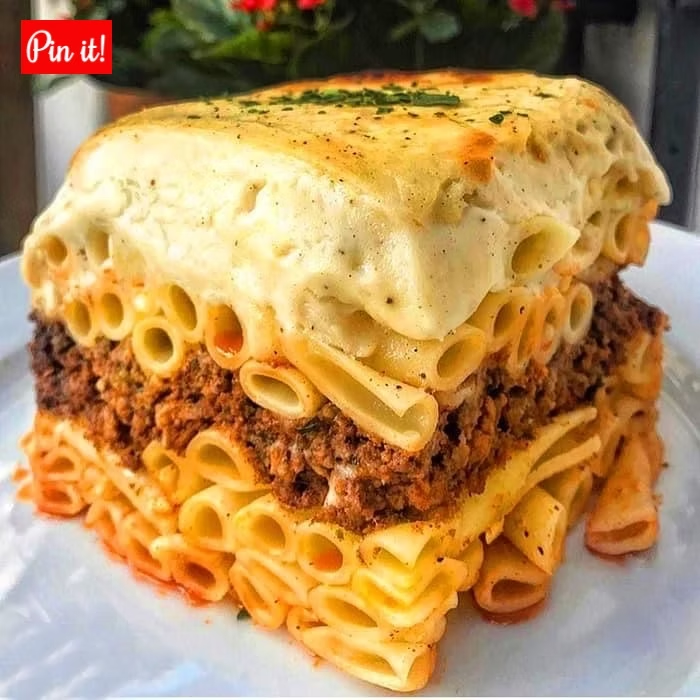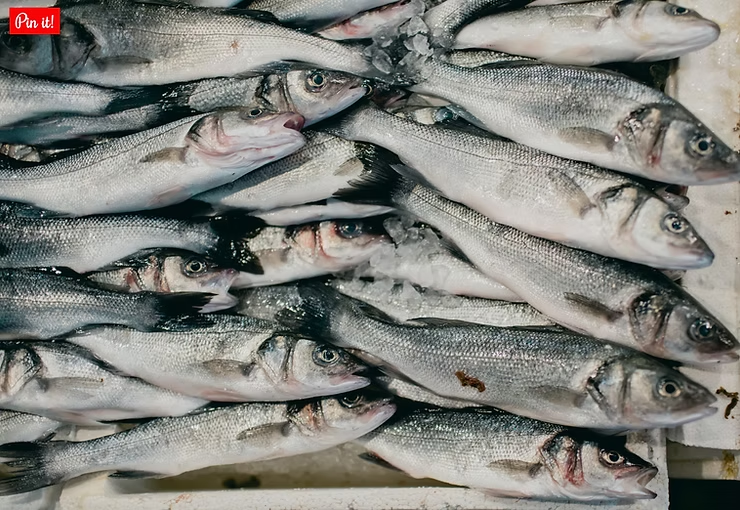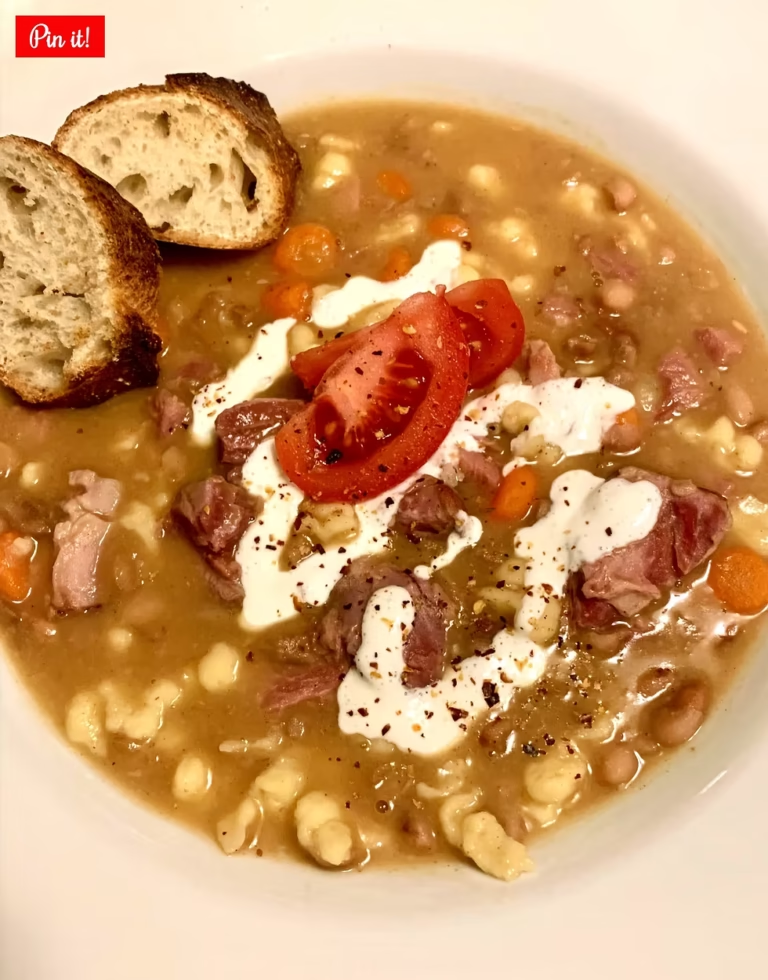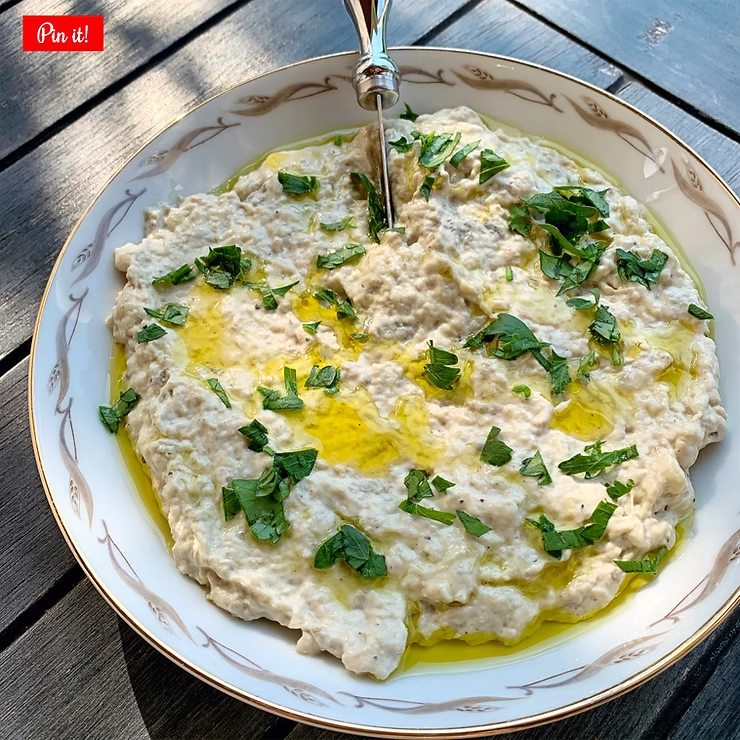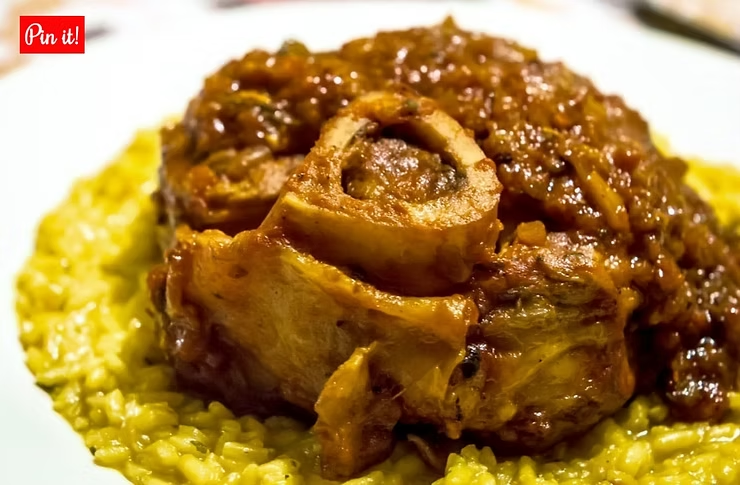I’m not Greek but feel that I have earned the hard-sought title of an ‘Honorary Greek’, by being married to one for 27 years, regularly interacting with the MANY Greek relatives in both the USA and Athens, as well as traveling throughout Greece NUMEROUS times. I’ve always wondered whether Greeks tire of the pedestrian description of their uniquely delicious Pastitsio as the “Greek Lasagna.” For my taste, Italian lasagna is good, but Greek pastitsio is even better. Why do I say that? Primarily, because I feel the meat sauce in pastitsio is uniquely seasoned with aromatic spices, offering depth and complexity to its flavor. The creamy béchamel sauce on the surface offers a rich texture making the dish more interesting. And the cheeses used in pastitsio are characteristically sheep’s milk cheeses, as opposed to mild cow’s milk cheeses, which offer a sharp, tangy bite. These all complement each other to provide amazing flavor to the dish. I chose to write this blog not only to add to your ‘Greek Table’, a theme that I have been slowly developing via my past food blogs, but also because one of my readers specifically asked for an authentic pastitsio recipe. Upon this request, I scoured my Greek cookbooks and consulted with the Greek family. After a fantastic cooking session with ‘The Yia Yia’, I have a great recipe to share with you that has been Yia Yia tasted and approved! Approved so much, in fact, that now SHE is asking for “MY” recipe!
What is Pastitsio?
Pastitsio is a traditional baked Greek “casserole” that alternates layers of cheesy pasta with a seasoned, tomato-based meat sauce, ultimately topped, on its most superficial surface, with a creamy béchamel sauce and sprinkled with a bit of cheese. It is typically assembled in a baking pan, often measuring 9″ x 13″, baked in an oven, and cut into squares to serve. In these ways, it resembles Italian lasagna in its appearance, but there are stark differences between the two dishes.
Greek Pastitsio
Italian Lasagna
Some of the differences are:
Pasta type – Italian lasagna traditionally utilizes long, flat sheets of lasagna pasta. Each pasta layer is therefore much thinner, but there are more of them. Greek pastitsio utilizes cylindrical tubes of pasta like ziti, penne, or bucatini pasta, allowing for a much thicker pasta layer, but fewer of them.
Cheese – Italian lasagna traditionally incorporates ricotta and mozzarella cheeses, both made of buffalo’s or more commonly cow’s milk. In lasagna, the cheeses are added on top of the single-sheet thickness layers of the lasagna pasta. Greek pastitsio incorporates, ideally, Greek kefalotiri or mizithra cheeses into the pasta layer. If those are not easily available where you live, however, then pecorino romano is a fine substitute, as ALL of them are made with sheep’s milk. In Pastitsio, the cheese is mixed in with the pasta, as opposed to being added as a separate layer.
Meat sauce – The meat sauces for both lasagna and pastitsio are tomato-based and typically made with ground beef, although ground lamb is a delicious alternative for pastitsio. Onions, garlic, and celery can be incorporated into either. The key differences are the added AROMATIC seasonings of cinnamon, nutmeg, and allspice that are additionally incorporated into pastitsio’s meat sauce.
Pastitsio Recipe
This dish can be a bit time-consuming to make, as there are several steps, but it is so delicious. When I prepared it, my preparation time was 2 hours. The subsequent oven time, for the fully assembled casserole, was about 30 minutes. The basic recipe that I followed came from the cookbook ‘Modern Greek’, by Andy Harris, at the recommendation of my awesome Greek cousin, Rina. I have to admit that I tweaked the recipe somewhat, primarily but not solely, in regard to the added seasonings.
Start with the Meat Sauce:
4 Tbsp olive oil
2 medium-sized onions, peeled and diced
2 garlic cloves, minced
2 celery stalks, peeled and finely chopped
3 tbsp finely chopped fresh flat-leaf parsley
2 tsp dried oregano
1/2 tsp dried thyme
2 lbs. lean, ground beef or ground lamb
1/2 cup red wine
28 oz can crushed tomatoes
2 tbsp tomato paste
1 1/2 tsp cinnamon
1 tsp ground nutmeg
1/2 tsp ground allspice
2 bay leaves
2 tsp salt
2 tsp freshly ground black pepper
Heat 3 Tbsp of the olive oil in a Dutch oven over medium heat. Saute the onions, garlic, celery, parsley, oregano, and thyme for about 5 minutes or until softened. Transfer this mixture to a bowl and reserve.
Add the remaining 1 Tbsp of the olive oil to the Dutch oven and saute the ground beef or lamb, stirring frequently, for about 8 minutes or until the meat has browned. Drain off excess fat in a colander. Return meat to pot. Add the red wine, crushed tomatoes, tomato paste, cinnamon, nutmeg, allspice, bay leaves, salt, and pepper. Sauté for another 5 minutes. Return the onion, garlic, and celery mixture to the pot. Stir well and simmer, covered, about 40 minutes until the sauce has thickened. Taste and adjust the spices to your liking. (makes 5 cups)
Next, make the Pasta:
1 1/2 lb penne or bucatini
1 tsp salt
4 Tbsp butter
2 eggs, lightly beaten
4 Tbsp grated pecorino Romano cheese
1 cup bechamel sauce (see below)
Bring a large pot of salted water to a boil. Add the pasta and boil for about 11 minutes, or until al dente. Drain in a colander, transfer to a large bowl, and add the butter. Toss to coat.
Allow pasta to cool. (While cooling, make the béchamel sauce). Once cooled, add the beaten eggs, pecorino cheese, and one cup of béchamel sauce. Toss the pasta until well coated with the mixture.
While the pasta is cooling, make the Béchamel Sauce:
4 cups milk
1 cup half-n-half
8 Tbsp butter (1 stick)
2/3 cup all-purpose flour
2 eggs
4 tbsp grated pecorino Romano cheese
1/2 tsp nutmeg
1/2 tsp salt
Heat the milk and half-n-half, together, in a saucepan over low heat until hot, but not boiling. In a separate large saucepan, melt the butter. Once butter is melted, mix in the flour with a wooden spoon to combine. Stir continually for a few minutes allowing the flour to cook for just a bit. Slowly pour the hot milk into the flour mixture and mix constantly with a wooden spoon. Carefully, add a couple ladlefuls of the hot milk to the beaten eggs to temper them, whisking continuously. Then add the tempered egg mixture to the rest of the béchamel, as well. Stir, stir, stir with a wooden spoon until the sauce thickens, trying to rid the sauce of any lumps with the spoon. (If unable to remove lumps with the wooden spoon, alone, then remove from heat and use a hand-held mixer to make the sauce smooth.) Once béchamel sauce is smooth and creamy, mix in the pecorino cheese, nutmeg, and salt. Then, IMMEDIATELY add 1 cup of it to the pasta mixture above, and assemble the pastitsio. (makes 4 cups)
Finally, the Assembly:
2 Tbsp butter, melted
pasta mixture
5 cups meat sauce
3 cups béchamel sauce
1 egg, beaten
2 Tbsp grated pecorino Roman
Preheat the oven to 400 F. Brush the bottom and sides of a rectangular 9″ x 13″ baking pan with the melted butter. Spread half of the pasta mixture evenly in the pan. Cover with all of the meat sauce. Add the remaining half of the pasta mixture over the meat sauce. Spread the surface with the remaining 3 cups of the béchamel sauce, smoothing it over top. Beat one egg with a fork and carefully baste the entire surface of the béchamel. Sprinkle with the pecorino cheese.
Place into oven, uncovered. Bake for 30-40 minutes until the top is golden brown. Remove from oven and let rest for 15-30 minutes before cutting into squares and serving.
Greek pastitsio is delicious comfort food. While it shares similarities with Italian lasagna, it has distinct flavor differences. Serve it with mixed Greek olives and chunks of feta cheese on the side. It pairs nicely with red wines such as a Cabernet Sauvignon or one of my favorite “everyday wines”, a Valpolicella Ripasso. I hope you give it a try. I will add to YOUR Greek Table again soon … so stay tuned!

